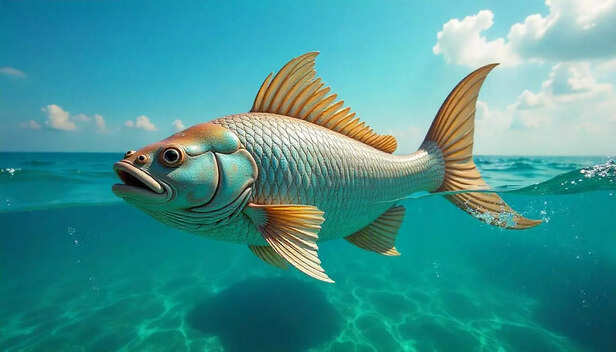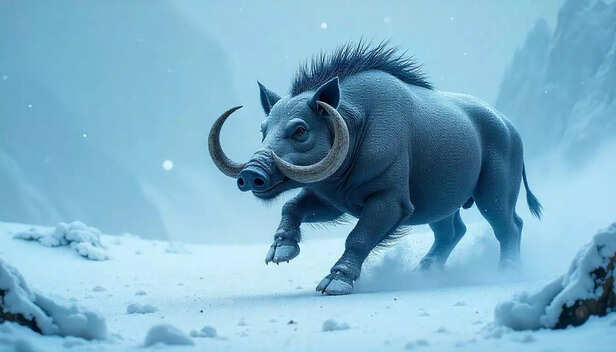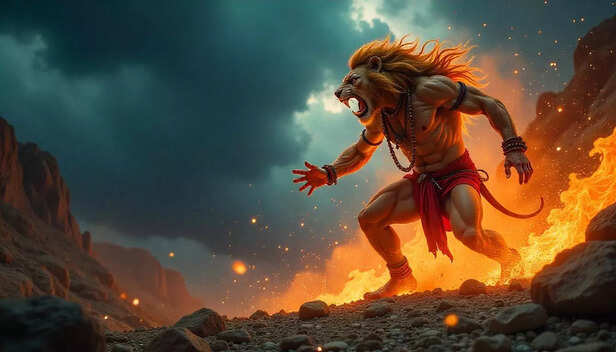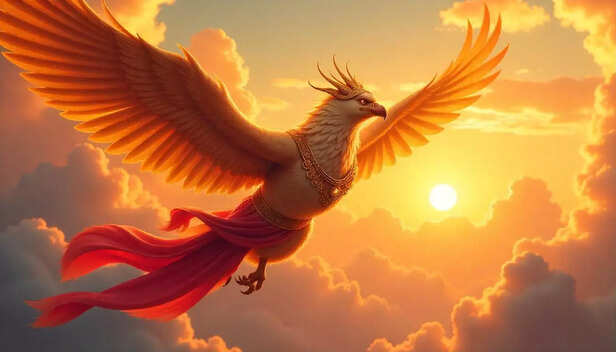Why Hindu Gods Took Animal Avatars, The Meaning Most People Miss
Ayush Singh | Jul 08, 2025, 13:45 IST
“When Gods Took Animal Forms: What Avatars Teach Us About Nature” is a thought-provoking exploration of how Hindu mythology uses divine animal avatars to express ecological wisdom. From Vishnu’s fish form saving life from a great flood to the boar lifting Earth from chaos, each transformation reflects deep respect for nature. The article reinterprets stories of Matsya, Kurma, Varaha, Narasimha, and Garuda through a modern lens, highlighting their environmental symbolism and relevance in today’s climate crisis.
Indian mythology isn't just a catalogue of gods and battles; it's a layered mirror to the natural world. One of the most profound aspects of Hindu mythology is the belief that the divine doesn't just reside in the heavens or temples but is embedded within every element of nature. This becomes crystal clear in the concept of animal avatars.
Why would a supreme god choose to take the form of a fish, a tortoise, a boar, or even a half-man, half-lion? The stories aren’t merely fantastical tales. They hold environmental consciousness, ecological symbolism, and a subtle reverence for biodiversity. Through these divine transformations, mythology offers ancient wisdom on coexisting with, respecting, and learning from the animal kingdom.

The story begins with the Matsya Avatar, the first incarnation of Vishnu. He takes the form of a giant fish to warn humanity of an impending deluge. Guiding a boat carrying sages, seeds, and animals, he preserves life on Earth.
At first glance, it sounds eerily similar to the Noah's Ark story, but Matsya represents more than a flood hero. In a country where rivers are sacred and water is life, the fish becomes a symbol of aquatic wisdom and ecological warning. The avatar underscores the need to protect water bodies and understand the consequences of imbalance in nature. It teaches that when humans stray too far from dharma, nature retaliates.

In the second avatar, Vishnu takes the form of a tortoise to support Mount Mandara during the churning of the ocean (Samudra Manthan). Without his hard shell beneath it, the mountain would sink.
A tortoise is an interesting choice. Grounded, patient, and resilient. Its symbolism is vast—representing stability, endurance, and the silent strength of the Earth itself. Kurma reminds us of the forgotten creatures that carry ecosystems on their back, quite literally. It is also a message to slow down and listen to the natural world’s slower rhythms.
In today’s world of speed and consumption, the tortoise avatar whispers: to preserve the cosmos, we must learn the value of stillness.

When the Earth (personified as the goddess Bhudevi) was submerged in the cosmic ocean by a demon, Vishnu became Varaha, a wild boar, and lifted her back with his tusks.
This is one of the most powerful images in Indian mythology: a god taking the form of a boar, diving into darkness to save the Earth. The boar, often considered impure or wild, here becomes the saviour. The story flips our hierarchy of species. It tells us that no creature is too small or ugly to be divine.
In ecological terms, Varaha reminds us of soil health, land protection, and the urgent need to rescue the Earth from human-induced drowning—be it due to pollution, mining, or climate change.

The Narasimha Avatar, half-man and half-lion, is one of the most complex. When the demon Hiranyakashipu misuses his invincibility against gods and devotees, Vishnu takes this fierce form to defeat him. Not quite human, not entirely beast.
This fusion reflects our duality. Are we more like animals, driven by instincts, or gods, guided by consciousness? Narasimha’s rage is not reckless; it’s righteous. He protects balance and reminds us of the thin line between wildness and wisdom.
From a nature lens, lions represent power, territory, and leadership in the wild. But Narasimha also cautions against pride and exploitation. Power, even divine, must have limits.

Though not an avatar, Garuda, Vishnu's vahana (mount), is worth mentioning. A colossal eagle with the strength to devour serpents and fly between worlds, Garuda is both awe-inspiring and noble. He fights for his mother’s freedom and ultimately becomes a symbol of liberation, loyalty, and the sky’s untamed spirit.
Birds in mythology often signify vision, freedom, and perspective. In today’s era of deforestation and habitat loss, Garuda reminds us that the skies too need saving. His ability to rise above chaos encourages humans to zoom out and see the bigger ecological picture.

In the Vedic worldview, nature wasn’t outside the divine plan. It was the divine plan. Trees were sacred. Rivers had goddesses. Mountains were embodiments of strength. Animals were not resources, but metaphors of wisdom.
Today, we categorize, commercialize, and control. The ancient stories urge us to return to reverence. They don’t ask us to worship animals literally but to see them as co-teachers in the classroom of life. When a god becomes a fish or a boar, it isn't demotion. It's devotion.
7. Why These Stories Still Matter in the Climate Age
We’re living in a time of climate grief. Melting glaciers, extinct species, choking oceans. In this chaos, mythology isn’t escapism. It can be a moral compass.
Each avatar has an ecological arc:
 Indian mythology never separated humans from nature. Unlike the modern world that placed us at the top of a pyramid, these ancient tales suggest a circle — where humans, animals, plants, rivers, and gods all co-exist.
Indian mythology never separated humans from nature. Unlike the modern world that placed us at the top of a pyramid, these ancient tales suggest a circle — where humans, animals, plants, rivers, and gods all co-exist.
The next time we see a fish in a river, a turtle on a beach, or a wild boar in a forest, may we remember these avatars not just as stories from the past, but as spiritual nudges in the present. Nature has always been divine. It’s time we treat it that way again.
Why would a supreme god choose to take the form of a fish, a tortoise, a boar, or even a half-man, half-lion? The stories aren’t merely fantastical tales. They hold environmental consciousness, ecological symbolism, and a subtle reverence for biodiversity. Through these divine transformations, mythology offers ancient wisdom on coexisting with, respecting, and learning from the animal kingdom.
1. Matsya Avatar: The Fish That Saved the World

Matsya Avatar
( Image credit : Freepik )
The story begins with the Matsya Avatar, the first incarnation of Vishnu. He takes the form of a giant fish to warn humanity of an impending deluge. Guiding a boat carrying sages, seeds, and animals, he preserves life on Earth.
At first glance, it sounds eerily similar to the Noah's Ark story, but Matsya represents more than a flood hero. In a country where rivers are sacred and water is life, the fish becomes a symbol of aquatic wisdom and ecological warning. The avatar underscores the need to protect water bodies and understand the consequences of imbalance in nature. It teaches that when humans stray too far from dharma, nature retaliates.
2. Kurma Avatar: The Tortoise Who Balanced a Mountain

Kurma Avatar
( Image credit : Freepik )
In the second avatar, Vishnu takes the form of a tortoise to support Mount Mandara during the churning of the ocean (Samudra Manthan). Without his hard shell beneath it, the mountain would sink.
A tortoise is an interesting choice. Grounded, patient, and resilient. Its symbolism is vast—representing stability, endurance, and the silent strength of the Earth itself. Kurma reminds us of the forgotten creatures that carry ecosystems on their back, quite literally. It is also a message to slow down and listen to the natural world’s slower rhythms.
In today’s world of speed and consumption, the tortoise avatar whispers: to preserve the cosmos, we must learn the value of stillness.
3. Varaha Avatar: The Boar That Lifted the Earth

Varaha Avatar
( Image credit : Freepik )
When the Earth (personified as the goddess Bhudevi) was submerged in the cosmic ocean by a demon, Vishnu became Varaha, a wild boar, and lifted her back with his tusks.
This is one of the most powerful images in Indian mythology: a god taking the form of a boar, diving into darkness to save the Earth. The boar, often considered impure or wild, here becomes the saviour. The story flips our hierarchy of species. It tells us that no creature is too small or ugly to be divine.
In ecological terms, Varaha reminds us of soil health, land protection, and the urgent need to rescue the Earth from human-induced drowning—be it due to pollution, mining, or climate change.
4. Narasimha Avatar: When Human and Beast Became One

Narasimha Avatar
( Image credit : Freepik )
The Narasimha Avatar, half-man and half-lion, is one of the most complex. When the demon Hiranyakashipu misuses his invincibility against gods and devotees, Vishnu takes this fierce form to defeat him. Not quite human, not entirely beast.
This fusion reflects our duality. Are we more like animals, driven by instincts, or gods, guided by consciousness? Narasimha’s rage is not reckless; it’s righteous. He protects balance and reminds us of the thin line between wildness and wisdom.
From a nature lens, lions represent power, territory, and leadership in the wild. But Narasimha also cautions against pride and exploitation. Power, even divine, must have limits.
5. Garuda: The Divine Eagle Who Soared Above Ego

Garuda avtar
( Image credit : Freepik )
Though not an avatar, Garuda, Vishnu's vahana (mount), is worth mentioning. A colossal eagle with the strength to devour serpents and fly between worlds, Garuda is both awe-inspiring and noble. He fights for his mother’s freedom and ultimately becomes a symbol of liberation, loyalty, and the sky’s untamed spirit.
Birds in mythology often signify vision, freedom, and perspective. In today’s era of deforestation and habitat loss, Garuda reminds us that the skies too need saving. His ability to rise above chaos encourages humans to zoom out and see the bigger ecological picture.
6. The Subtle Message: Ecology Was Always Spiritual

The Subtle Message
( Image credit : Freepik )
In the Vedic worldview, nature wasn’t outside the divine plan. It was the divine plan. Trees were sacred. Rivers had goddesses. Mountains were embodiments of strength. Animals were not resources, but metaphors of wisdom.
Today, we categorize, commercialize, and control. The ancient stories urge us to return to reverence. They don’t ask us to worship animals literally but to see them as co-teachers in the classroom of life. When a god becomes a fish or a boar, it isn't demotion. It's devotion.
7. Why These Stories Still Matter in the Climate Age
Each avatar has an ecological arc:
- Matsya speaks of flood preparedness and aquatic preservation.
- Kurma teaches geological balance.
- Varaha emphasizes saving land.
- Narasimha reminds us of the cost of unchecked power.
- Garuda inspires air and freedom conservation.
The Divine in the Wild

sprituality
( Image credit : Freepik )
The next time we see a fish in a river, a turtle on a beach, or a wild boar in a forest, may we remember these avatars not just as stories from the past, but as spiritual nudges in the present. Nature has always been divine. It’s time we treat it that way again.
